Sociology Group Project PDF

| Title | Sociology Group Project |
|---|---|
| Course | Social Theory |
| Institution | University of North Carolina at Pembroke |
| Pages | 3 |
| File Size | 109.4 KB |
| File Type | |
| Total Downloads | 85 |
| Total Views | 137 |
Summary
use this ...
Description
For this project, you will work with your group to create a brochure representing a fictional organization or advocacy group that was designed to fight or eliminate a social problem of your group’s choosing. See the list at the bottom of this document for suggestions of social problems you can use. You will also apply C. Wright’s Mills’ concept of public issue when describing the social problem, and compare it to the typical explanation of this social problem as a personal trouble.
A. The Cover: 5 points The cover of the brochure must include the name of the organization you created, a photo/picture related to the cause/organization, a mention of the social problem the organization will fight, and contact info for the organization. -Kay B. Quote flap: 5 points The inside center flap will contain a quote related to the issue, and the name of the person who stated the quote. This can be an inspirational quote, such as “Be the Change you Want to See in the World,” by Ghandi, or “If you give, you begin to live,” by Dave Matthews. Also include an image with the quote. This flap will grab the attention of the reader, inspiring them to read more and to potentially help out! -Omar 3 Facts about_________: (10 points) -Omar 3 Causes of ____________: (10 points) -Jailyn 2-3 Effects of ____________: (10 points) -Kay Social Theory: (30 Points) In this section, you will include a paraphrased definition of the theories, a brief discussion of how each of the three major classical theories would approach a study, or attempt to explain, the problem. And, you will use and cite your textbook for each theory’s section. Each theory’s paragraph will consist of at least 50 words, and will begin with a paraphrased definition of the theory. Then, you’ll go on to apply the theory to the problem. This means you will write three separate paragraphs for in this center section, one for each theory. Each has its own heading, which is the name of the theory you are discussion in that paragraph. Cite all information using ASA format. Omar - Social-Conflict Theory ( 10 points) Example
Social-Conflict Theory: Social-Conflict Theory views inequality, conflict, exploitation, and change as the basis of society (Ferris and Stein 2019). These theorists explore the ways in which the powerful exploit the poor, and the ways in which ideologies and other strategies help the rich maintain their power (Ferris and Stein 2019). Jailyn - Structural-Functionalism (10 points) Example Functionalism: Functionalism examines the structures of society and the ways in which each structure works alone and together to maintain order (Ferris and Stein 2019). Functionalism views poverty as a necessary part of society that prompts people to work harder in order to advance in society, and to help maintain social order (Ferris and Stein 2019). Kay- Symbolic Interaction Theory (10 points) Example Symbolic Interactionism: SI theory views interactions, symbols, and meanings as the basis of society, and examines the socially constructed nature of reality (Ferris and Stein 2019). These theorists examine the ways in which poverty is part of the presentation of the self for the poor, and how our class identities are sued to distinguish us from one another (Ferris and Stein 2019).
E. Sociological Imagination- public and personal issue flap: 25 points total -Jailyn
As you have learned, Mills’ concept of the Sociological Imagination argues that we should examine problems as public issues instead of personal problems, as this enables us to understand how social structures affect our lives on an individual and group basis. On the right side of the center of the brochure, you will explain how the problem you chose can be explained as a personal trouble and a public issue. The personal trouble explanation is often used to focus only on the individual, which can blame the person, and is not effective in changing the structure that can cause problems. On the other hand, the public issue explanation is the sociological explanation that Mills’ advocates in his concept, the Sociological Imagination. You must cite the personal and the public issue explanation- your textbook is probably a good option here. The Back of the Brochure: 5 points On the back of the brochure, you will include a picture of either your group, something that is related to the issue you chose, or someone who is known for studying or fighting this problem. Also include the name of everyone in your group, the class section number, and the term name (Spring 2020). -Omar
The Reference Page: The Reference Page will be submitted with the brochure, as a separate document. You must type your name on it (top right corner), and type “Reference Page” in the top middle (on the line below your name, but in the center of the page). The references must be in ASA format. If you do not include all references on the reference page that you used in the paper, you will lose 2 points for each one you did not include (and vice-versa for those not included in the paper that are on the reference page). And, if the references are not formatted correctly in ASA format, you will lose points based on how much they deviate from the correct format. Remember to type the references in alphabetical order, consistent with ASA format. We will go over and practice ASA format in class, and there is an ASA formatting guide posted in BB in the Course Project tab. I am also very happy to help you after you give it a try. SO, there are no reasons for incorrect citations and references. -Kay Your group will also present this project to the class during the last few days of the semester. You should create a presentation, such as a Powerpoint, Prezi, or some other way to show the class what you did. Your presentation will be graded. See the presentation guidelines for more on this. This presentation will account for 5% of your course grade. If you’re not present for your presentation, you earn a 0 on your presentation. Contribution: Each member of the group must contribute equally to this project. You will assess your own participation, as well as the rest of the group members’ participation, in this project, and this will be part of your project grade. Students who take over and do not allow input from others, or those who slack off and don’t contribute as much as they should, will lose points. Due date: This brochure will be due in class on Friday, April 10. I will not accept any late projects, nor will I accept any projects via email- no exceptions, so you might want to hand in the project early to avoid any unforeseen issues that could arise to prevent you from submitting it ON TIME IN CLASS....
Similar Free PDFs

Sociology Group Project
- 3 Pages

Sociology James Scholar Project
- 5 Pages

Sociology project (1) final
- 22 Pages

Sociology III Project
- 16 Pages

Sociology project last
- 16 Pages
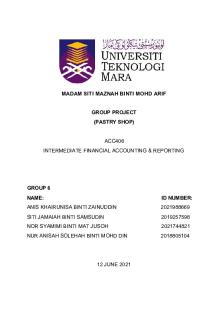
Group Project Account ( Group 6)
- 21 Pages
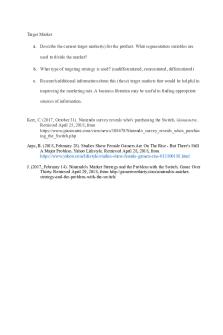
Group Project- Target Market
- 4 Pages
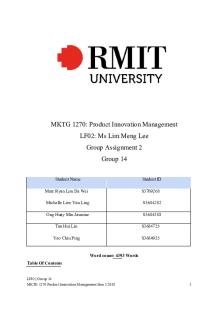
PIM Group Project 2
- 68 Pages
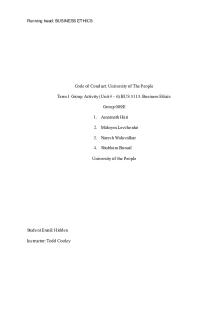
Group Project 009E Final
- 21 Pages
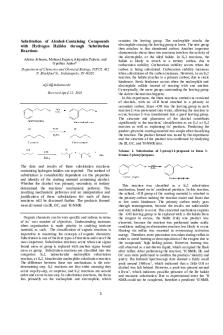
Group Project JOC Note
- 4 Pages

Group Project Proposal
- 1 Pages
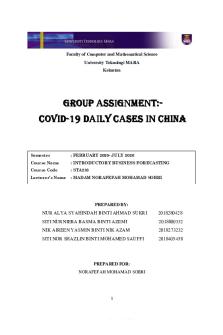
Group Project STA 233
- 33 Pages
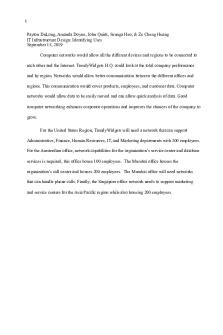
IST Group Project
- 19 Pages

Group project guidelines
- 1 Pages

group project sta108
- 55 Pages

CSR Group Project ASM401
- 18 Pages
Popular Institutions
- Tinajero National High School - Annex
- Politeknik Caltex Riau
- Yokohama City University
- SGT University
- University of Al-Qadisiyah
- Divine Word College of Vigan
- Techniek College Rotterdam
- Universidade de Santiago
- Universiti Teknologi MARA Cawangan Johor Kampus Pasir Gudang
- Poltekkes Kemenkes Yogyakarta
- Baguio City National High School
- Colegio san marcos
- preparatoria uno
- Centro de Bachillerato Tecnológico Industrial y de Servicios No. 107
- Dalian Maritime University
- Quang Trung Secondary School
- Colegio Tecnológico en Informática
- Corporación Regional de Educación Superior
- Grupo CEDVA
- Dar Al Uloom University
- Centro de Estudios Preuniversitarios de la Universidad Nacional de Ingeniería
- 上智大学
- Aakash International School, Nuna Majara
- San Felipe Neri Catholic School
- Kang Chiao International School - New Taipei City
- Misamis Occidental National High School
- Institución Educativa Escuela Normal Juan Ladrilleros
- Kolehiyo ng Pantukan
- Batanes State College
- Instituto Continental
- Sekolah Menengah Kejuruan Kesehatan Kaltara (Tarakan)
- Colegio de La Inmaculada Concepcion - Cebu